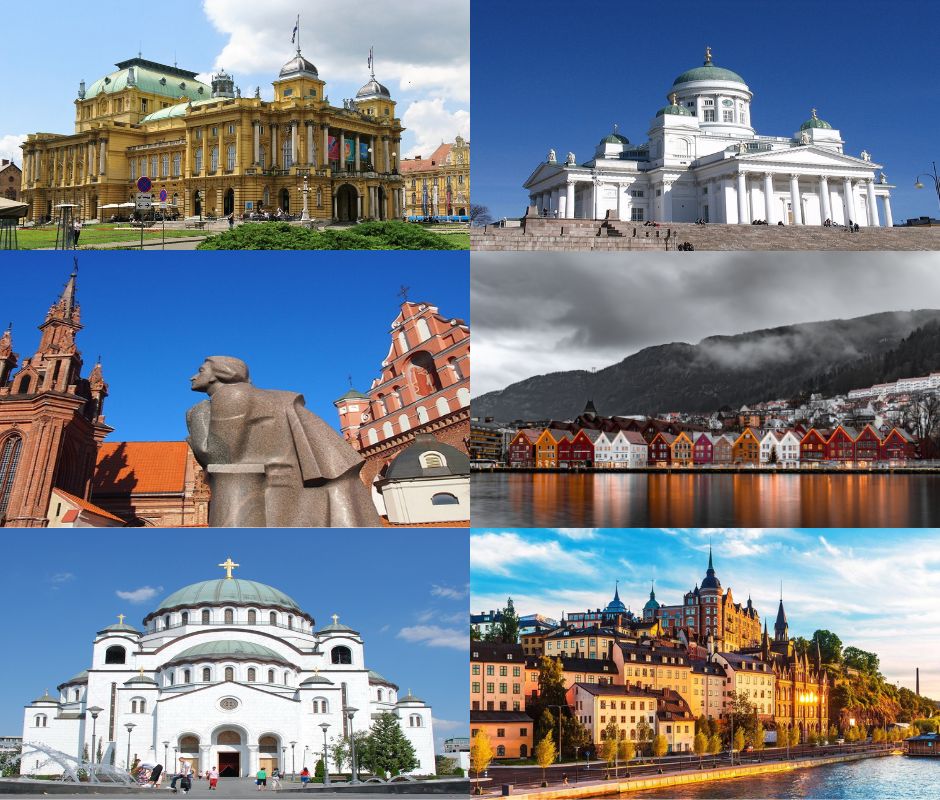Croatia is a country of emigration with a declining and ageing population, however, immigration to the country has been on the rise. Over the past decade, the population of Croatia declined by 230.000 reaching 4.047.700 persons at the end of 2020. The average age of the Croatian population in 2020 was 43.8 years. According to UN projections, the population of the country may further decline to reach 3.3 million persons by 2050 and 2.2 million by 2100.
Finland was a country of emigration until the 1980s and has traditionally not been strongly impacted by large migration flows. Movements were mainly within the Nordic region following the establishment of the Common Nordic Labour Market in 1954 and marked by Finns returning to Sweden in the 1960s and 1970s. In the late 1980s, Finland became a destination for migrants, in particular those born in Russia, the former Soviet Union and Estonia.
A long-standing country of emigration, in recent years Lithuania saw a reversal in its migration patterns. The year 2019 was the first one when the number of immigrants surpassed the number of residents leaving the country, and since then immigration remained higher than emigration. Around half of the recent arrivals comprise citizens of Lithuania returning to the country after living abroad, but the number of foreign-born residents has also been steadily growing. Between 2013 and early 2022, the number of foreign nationals living in Lithuania has more than tripled reaching 3.6% of the country’s population.
Norway only became a popular destination for immigration in recent decades. The combination of high salaries (average yearly earnings exceed EUR 57.000), as well as high rankings on the standard of living and life quality indexes, has made Norway a popular choice among immigrants. In 2022, Norway hosted 819.356 immigrants constituting 15% of the population. This figure rises to 1.025.175 when Norwegian-born to immigrant parents citizens are considered. The largest immigrant groups are from Poland (105.477), Lithuania (42.027), Sweden (35.894), Somalia (28.088) and Germany (25.897). Since 2020, the flow of immigrants has increased more than two-fold reaching 53.947 in 2021.
For the past half a century, Serbia remains primarily a country of emigration and since recently has also become a country of transit on the Balkan Route. The population of Serbia, which amounted to 6.871.547 at the end of 2020, is steadily declining. In the past decade, the country lost 350.000 inhabitants, partly due to emigration. Given the lack of national statistics on emigration, the estimations of the size of the Serbian diaspora vary. The Government of Serbia places the number of Serbians outside the country, as defined by the 2009 Law on the Diaspora and Serbs in the Region, at 4.5-5 million persons.
Sweden became a country of immigration from 1945 onwards. In 2022, the population of Sweden is 10.475.204 up from 8.882.792 in 2000. This population growth is heavily impacted by immigration in response to economic growth and employment opportunities, as well as a traditionally open policy to asylum seekers. The flow of immigrants has increased from 49.391 in 1998 to 90.631 in 2021.

